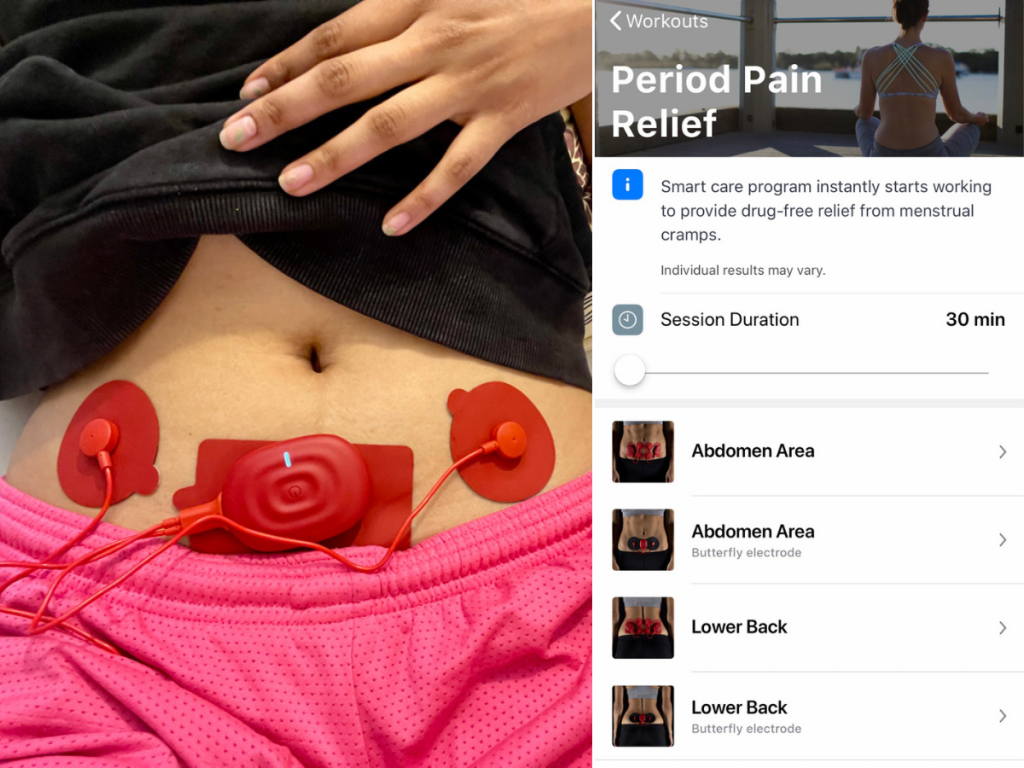- I tried a wellness tech device that uses shock therapy to help with period pain.
- PowerDot is a $200 device that sends low-voltage shocks to nerves that may release endorphins.
- Research is inconclusive on whether this type of therapy is effective at pain management.
Instead of popping Midol and soldiering through my period cramps, this month I tried to get relief by sending electric shocks to my nerves.
Specifically, I used PowerDot, a wellness tech device developed by Therabody. Therabody's rise to wellness tech stardom began with its first official product, the Theragun, a massage gun that went viral on social media and consistently ranks on media lists for best massage guns.
As the wellness industry explodes into a $1.5 trillion market, wellness tech employs apps, AI, and electronics to help people feel better.
The $200 PowerDot device sends low-voltage electric shocks to your nerves that may inhibit pain receptors from getting to your brain. Though athletes have used this technology to help with muscle recovery, companies are experimenting with consumer gadgets to help with period pain.
I am the ideal consumer for period pain solutions. My period pain is moderate to severe on the first two days, and the cramps come in painful pangs that last 15 to 30 minutes. Without taking over-the-counter pain medication, my monthly cramps can get in the way of work and socializing.
Though the research is inconclusive on whether low-voltage shocks can relieve pain, I felt instant relief using the PowerDot that went beyond what over-the-counter meds could do. However, the short-term pain relief wasn't enough to justify the device's high cost.
How electric shock therapy may relieve period pain
PowerDot uses transcutaneous electrical nerve stimulation therapy, or TENS. The therapy sends low-voltage electric currents to nerves where you feel pain.
The device can work by either blocking the transmission of pain signals to your brain, or stimulating the release of endorphin hormones that reduce pain, according to Cleveland Clinic.
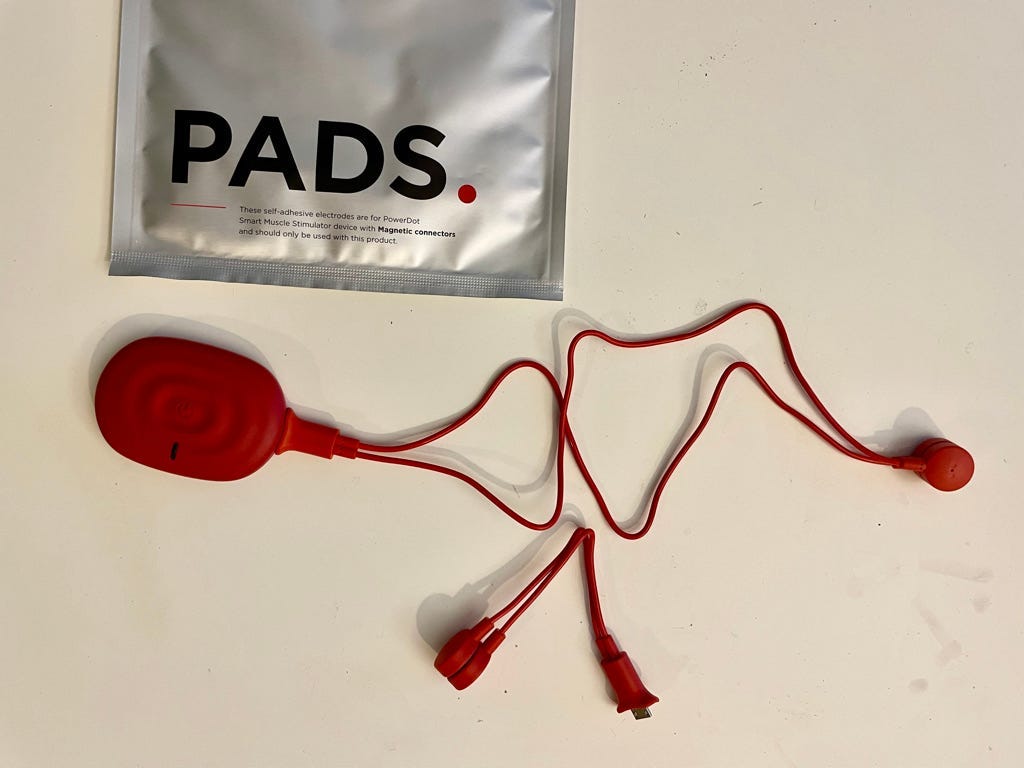
Cleveland Clinic does not recommend TENS to people who are pregnant, have cancer, are epileptic, have an electric implant, or have heart disease. The device appears to be safe for everybody else, as the National Institutes of Health could not identify side effects or complications when used as instructed.
According to the NIH, there is "no universal consensus" on whether TENS is effective at lessening pain. Some research has indicated TENS can provide short term pain relief, but cannot cure pain conditions or syndromes, per the NIH.
How I used electric shock therapy to help my period pain
My biggest issue with taking anti-inflammatory drugs like ibuprofen is the time it takes to kick in. Usually my period cramps come in pangs, and the largest pangs can last 10 to 15 minutes and hinder my ability to move.
By the time the anti-inflammatory drug kicks in, I've already felt moderate to severe pain. Plus, I have to take pain relief pills every four hours on the dot if I want constant relief.
PowerDot offered an immediate, albeit more complicated, solution to the pain.
Though the PowerDot device itself retails for $200, most users will need to purchase the $424 bundle that comes with electrode pads that connect to the shocks — a far greater investment than a $10 Midol bottle. (Therabody provided a free PowerDot to use for this story that Insider must return upon publishing.)
The device also comes with a list of precautions. PowerDot's handbook said not to use the device while standing, wearing metal, sleeping, operating machinery, in altitudes of over 1.8 miles, and a host of other situations.
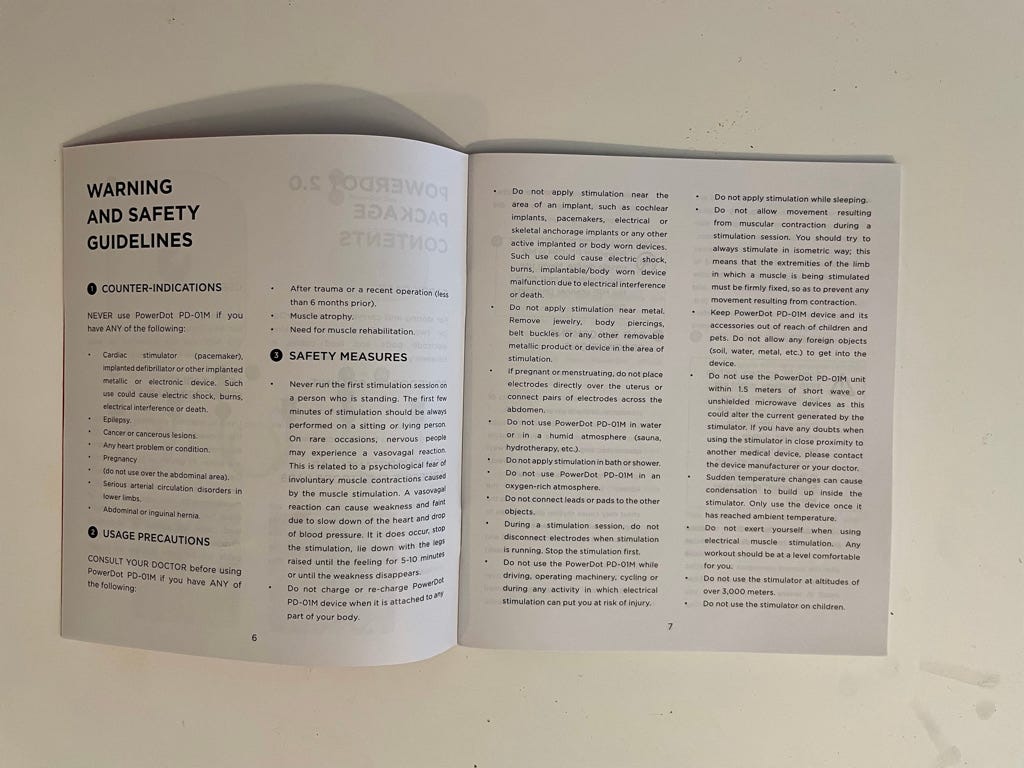
After reading the handbook, I downloaded PowerDot's app, created an account, and selected the Period Pain Relief program. Users can select to either place the device on their abdomen or lower back, and the duration of time to send the shocks.
I went for the abdomen set up. Neither the app nor the handbook had a guide for the exact placement of pads for period relief, so I placed a large section right below my belly button with two small pads on either side.
The app asked me to rank my pain, which I labelled as a 5/10, or "distracting." The device then started my 30-minute-long session. I had the ability to slowly increase the voltage of the device until I started to feel a benefit.
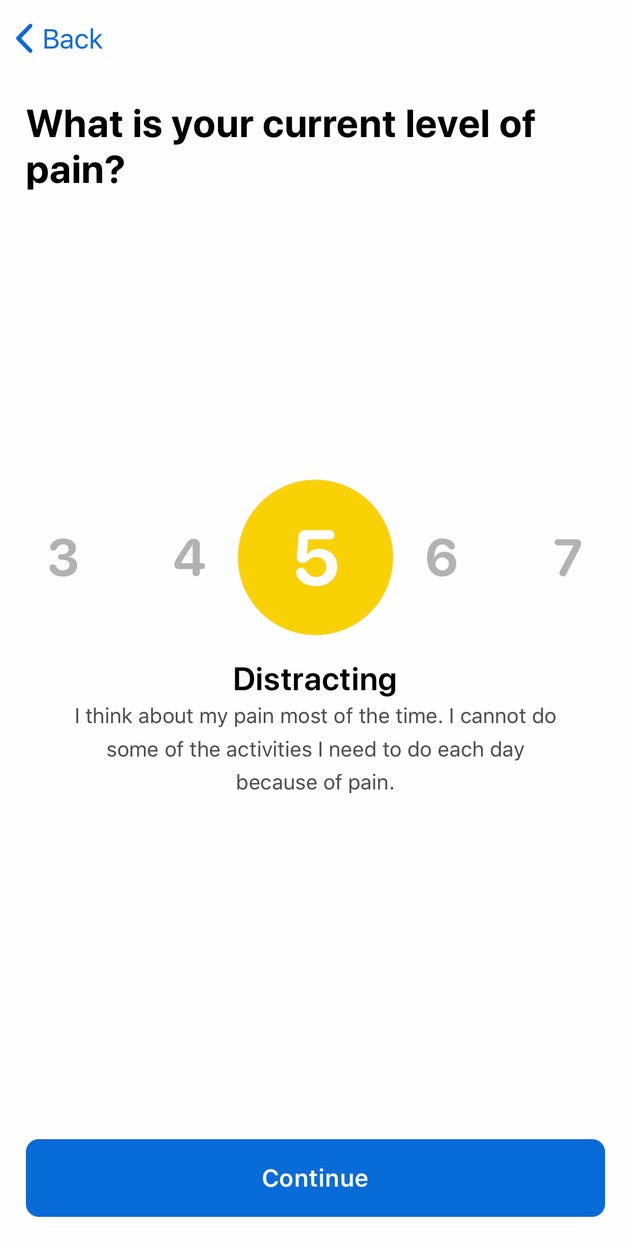
Electric shock gave me immediate relief from my period pain, but couldn't provide a long-term solution
The first time feeling the shocks was more of a massage then electrocution. I felt some relief but I kept increasing until the shocks became more noticeable and slightly uncomfortable.
It took me less than five minutes to begin feeling my period pain become less intense. I got used to the shocks themselves and started to feel my period pain instantly go away.
I got a bit bored lying down with the device on for 30 minutes straight, and at times needed to lower the shocks to give myself a break.
At the end of the massage, I could not feel any period pain for about 30 minutes. I was ecstatic at first, since anti-inflammatory medication could only dull my severe period cramps while I felt no pain at all immediately after using PowerDot. But the pain-free feeling was short lived, fading about a half-hour later.
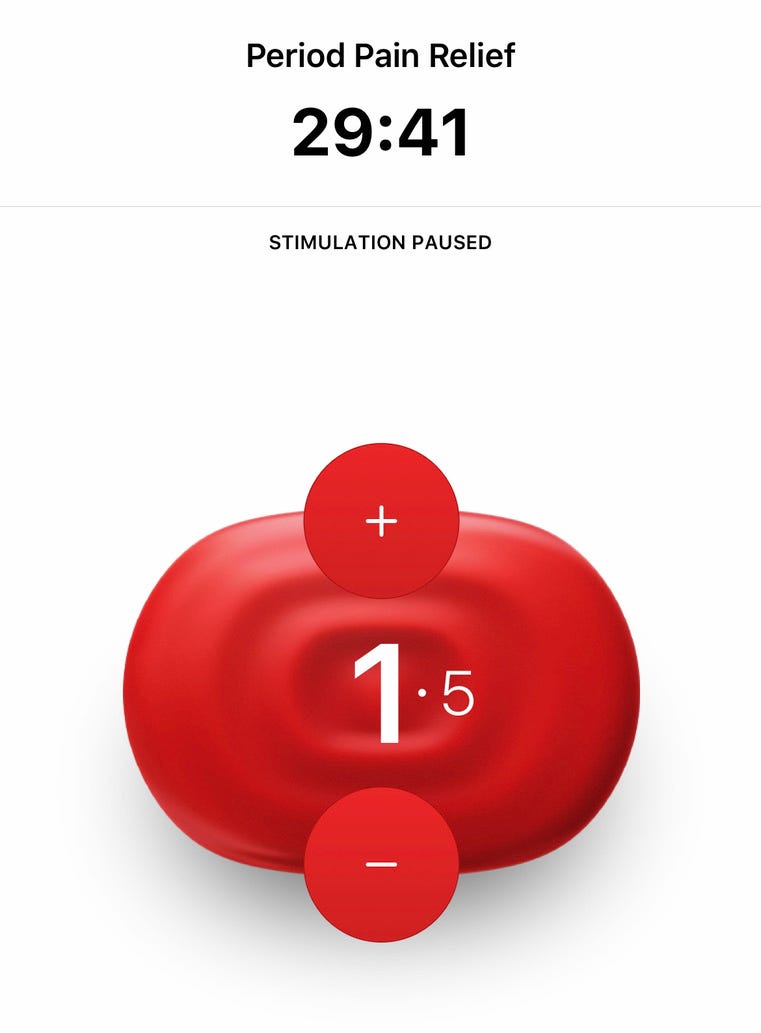
I tried the device again when I felt the next pang come on, and I had the same success as the first time: within five minutes of using the device, I felt my pain lessen and begin to go away completely. I tried the shock therapy for 45 minutes this time to see if it would provide me more cramp-free time, but was disappointed when the pangs returned 30 minutes after the session ended.
Though I felt immediate relief from PowerDot, it was inconvenient to continuously reach for the device, apply the pads, and lay down for at least 30 minutes to get relief. I felt less pain immediately after using the PowerDot compared to when taking anti-inflammatory medications, but the cramps came back too soon for me to use the device long-term.

